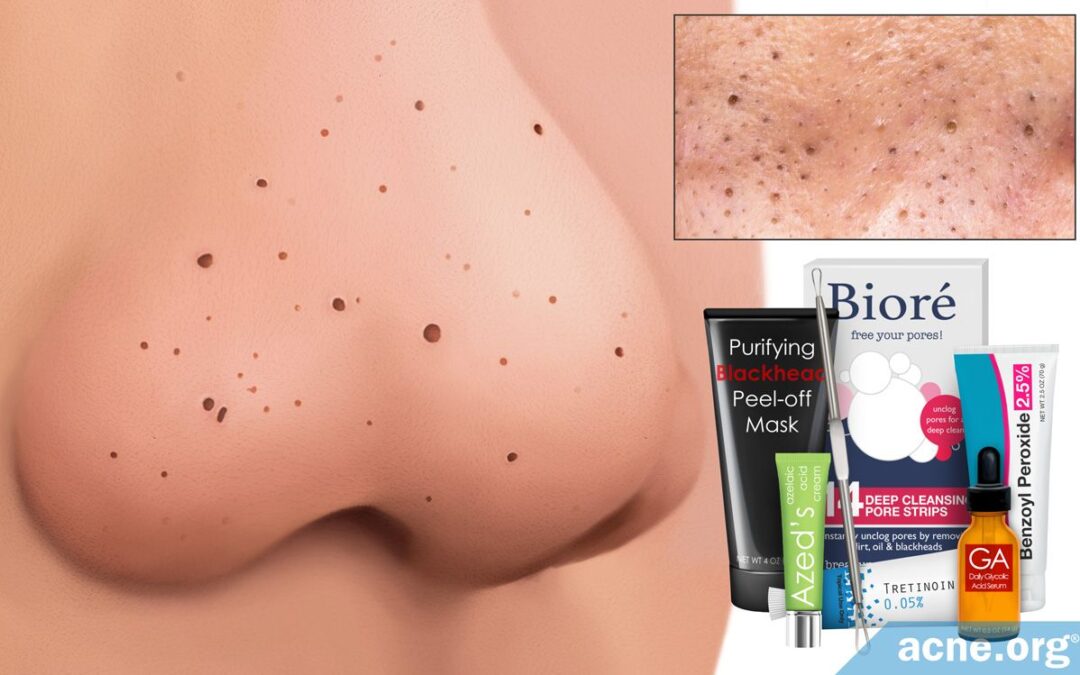Views: 0
Mechanical Extraction Can Clear Blackheads, but Prevention of Blackheads Is the Best Means of Keeping the Skin Clear

The Essential Info
What Is a Blackhead? Blackheads, also called open comedones, are small, brown- or black-colored lesions that are most often found on the face, especially around the nose. They result when a pore is only partially clogged, which is why they are called “open” comedones. Because they are partially open to the skin’s surface, contents of the clogged pore interact with oxygen in the air, and this is what causes the brown/black look. Blackheads can remain on the skin for several weeks or even months before clearing on their own. They may also develop into more severe “inflammatory” acne lesions that become red and sore.
How Do You Get Rid of Them? The best method of keeping the skin clear of blackheads is by preventing their formation in the first place. Proper topical acne treatment can achieve this, and there is some preliminary evidence that shows that consuming a low-sugar diet may also help somewhat. Once a blackhead develops, it can be removed by mechanical extraction by an esthetician/cosmetician, nurse, or dermatologist, or with Bioré® strips or peel-off masks. However, without proper topical acne treatment to follow it up, the blackhead will likely refill.
Caution: Manual extraction and Bioré® strips both cause major physical irritation, and physically irritating the skin can lead to more breakouts. This is a case of “the cure being worse than the disease,” and it is extremely likely that the irritation you endure will lead to new breakouts in the following 1-2 weeks. I personally recommend avoiding Bioré® strips entirely. When getting manual extraction, ask that your practitioner be as gentle as possible.

The Science
Blackheads are brown- or black-colored clogged pores that mainly form on the face, but can also be found on the neck, back, shoulders, chest, and upper arms. Dermatologists classify blackheads as “non-inflammatory” acne lesions because they are not red, swollen, or painful.
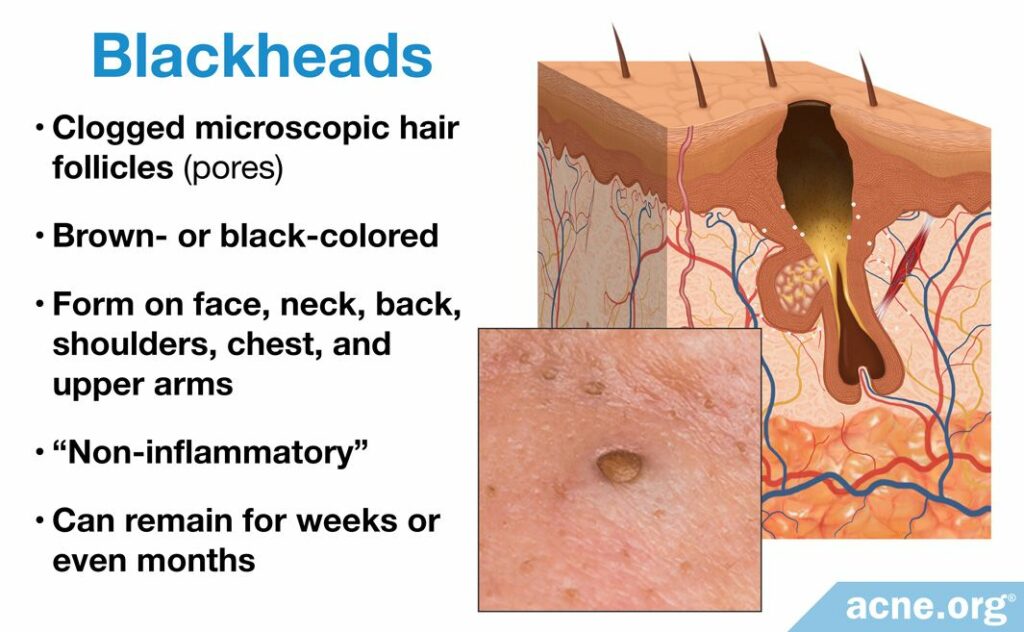
Blackheads form when microscopic hair follicles (pores) become partially clogged by skin cells and skin oil, called sebum. Because the pore is only partially blocked, it remains open to the surface of the skin and the pore’s contents come into contact with the surrounding air, causing the contents to oxidize and take on a brown/black color.
Once a blackhead develops, it can remain on the skin for several weeks or months, after which it either resolves on its own or develops into a red, swollen, sore acne lesion, known as an “inflammatory” acne lesion. Inflammatory acne lesions include papules, pustules, nodules, and cysts.
Blackheads do not require treatment and will resolve on their own after several weeks or months. However, if you want a blackhead gone immediately, it will need to be treated.
The only effective way to treat blackheads once they develop is through physically extracting them in various ways, but these procedures provide only temporary clearance of blackheads, and they tend to refill within a few weeks after they are extracted.
Therefore, the best way to get rid of blackheads is to prevent their formation in the first place. Blackhead prevention can be accomplished through traditional topical acne medications like benzoyl peroxide, retinoids (tretinoin, adapalene, tazarotene), alpha hydroxy acid, and azelaic acid.
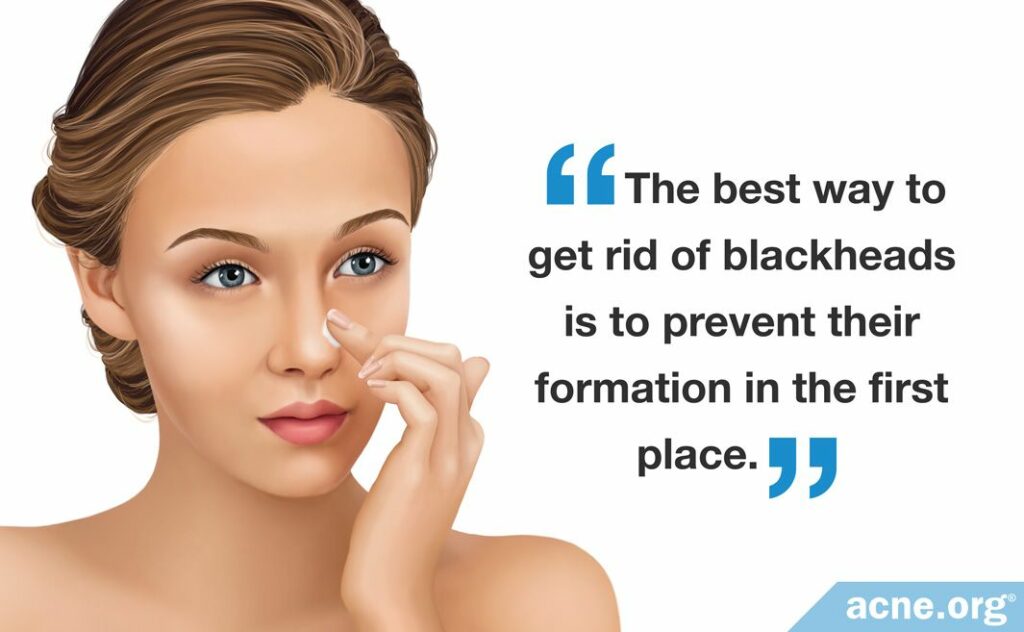
Treatment of Blackheads
There are three commonly used methods to extract blackheads:
- Mechanical extraction
- Bioré® strips
- Peel-off masks
However, before we describe each one, it is crucial to note that all of these methods are highly irritating to the skin. It is well known that anything that physically irritates the skin can lead to more acne. This is why many people notice breakouts in the week or two following blackhead removal.
I personally strongly recommend against Biore® strips and peel-off masks. It is far better to prevent blackheads than it is to treat them with these physically irritating methods, which can then lead to more acne.
Mechanical extraction can lead to less irritation in the hands of a skilled professional, but it is still important to specifically ask your skincare professional to create as little irritation as possible during mechanical extraction.
Mechanical extraction
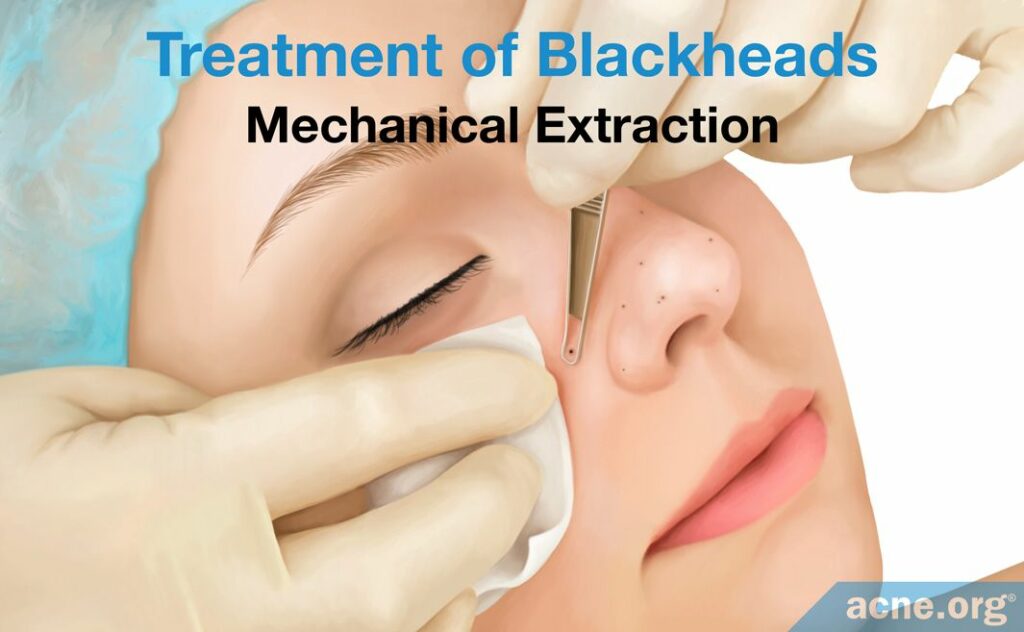
Mechanical extraction is a procedure that removes blackheads through the use of a tool called a comedone extractor.
A comedone extractor is a medical instrument with a miniature loop on one end that an esthetician/cosmetician, nurse, or doctor can use to extract the contents of a blackhead.
Mechanical extraction is performed by placing the loop of the extractor onto the surface of the skin and applying pressure at a perpendicular angle. Often, dermatologists will apply topical acne medications, including tretinoin, adapalene, or tazarotene, prior to the extraction to facilitate clearance and prevent the formation of new blackheads.
This procedure will immediately clear the blackhead plug. However, mechanical extraction of a blackhead is not a permanent solution since blackheads often refill within a couple of weeks after extraction. Therefore, it is important to combine mechanical extraction with topical acne medications that can prevent their re-formation. Further, it is important to never attempt this procedure at home since squeezing blackheads can damage the skin, push the contents deeper into the skin, increase the risk of skin infection, and might even cause scarring.1-8
Having said that, mechanical extraction of blackheads by a professional, combined with topical acne treatments, can be a good idea because it may prevent blackheads from developing into more severe types of acne lesions.9
For women who decide to undergo comedone extraction, it might be best to make your appointment for the middle of your menstrual cycle, during ovulation. Some experts believe that mechanical extraction performed at this time may help prevent acne flare-ups that many women experience right before their period begins.10
Bioré® strips
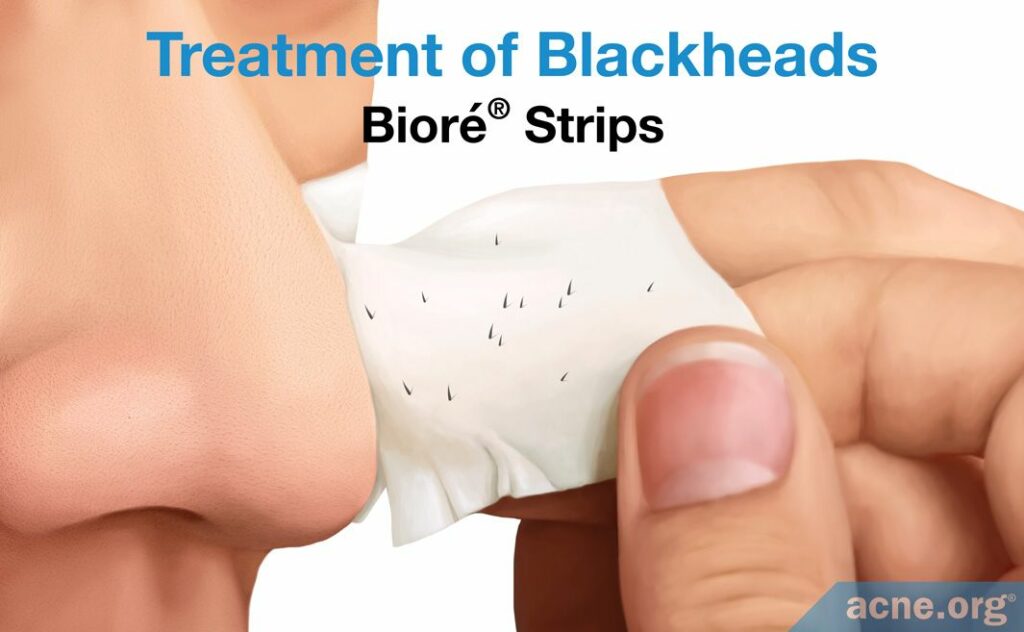
Bioré® strips are adhesive pads that, when placed on the face, can remove the contents of a blackhead. These strips are most often used on the nose, as this is where blackheads tend to develop. The adhesive pad is coated with a positively charged compound called polyquaternium 37, and this positive charge draws out the negatively charged proteins from a pore.
Scientists have not performed research to investigate how well Bioré® strips eliminate blackheads. However, a 1999 study published in the Journal of Dermatological Treatment researched the effectiveness of Bioré® strips on sebaceous filaments, which comprise sebum and dead skin cells, and are similar to blackheads. The study found that the strips removed the majority of the sebaceous filaments.
However, just like mechanical extraction, blackheads that are removed with Bioré® strips are likely to refill within a couple of weeks.
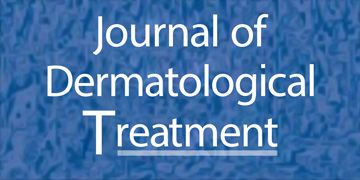
To perform this study, the researchers applied Bioré® strips to several areas of the face in 10 people with sebaceous filaments. Once the Bioré® strips were removed, the researchers employed several types of microscopy to see how well the strips worked to clear the contents of the pore. They found that Bioré® strips cleared 90 – 95% of hair follicles, with the most significant clearing occurring from the nose. They also found that reapplying the Bioré® strips on a weekly basis did not cause any additional improvement in the skin. The researchers did not state whether Bioré® strips cleared blackheads, possibly because it may not have been the proteins that caused the blackheads, so more research is needed to determine how well they eliminate them.1,11-13
Peel-off masks
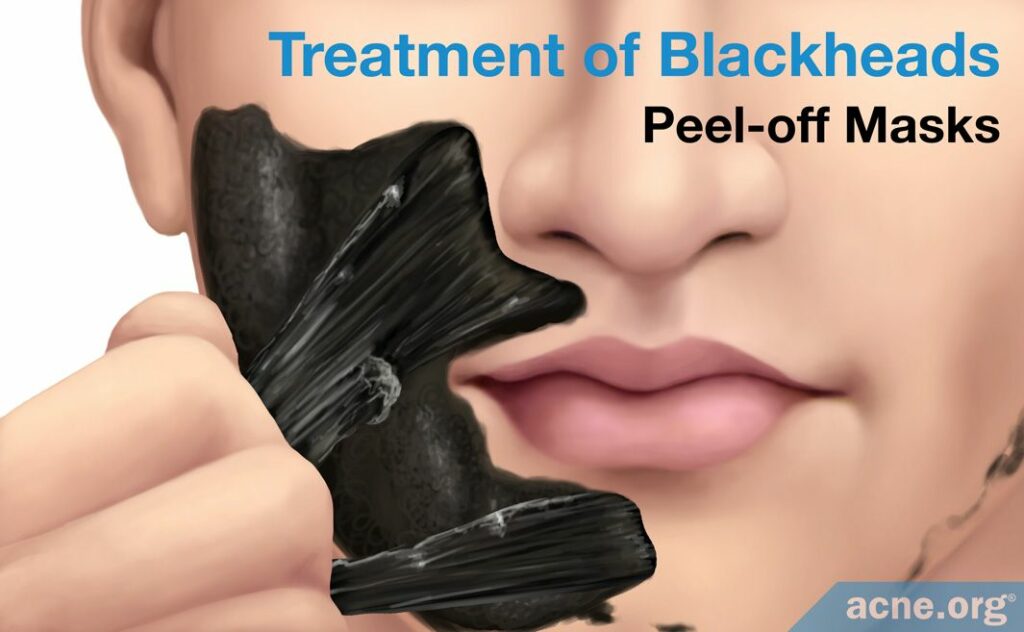
Peel-off masks are facial masks that are applied to the face, allowed to harden, and carefully peeled off. These masks are widely believed to remove blackheads by pulling the blackhead plug from the skin during mask removal.
However, as with Bioré® strips, scientists have not performed any research to determine whether peel-off masks are effective at clearing blackheads from the skin. It is likely that they are useful at removing sebaceous filaments, but more research is needed before scientists can determine how well peel-off masks eliminate blackheads.
Again, just like mechanical extraction, blackheads that are removed with peel-off masks are likely to refill within a couple of weeks, which is why prevention is the real key to blackheads.
Preventing Blackheads
The best way to maintain skin clear of blackheads is to prevent their formation in the first place. Preventing the formation of blackheads can be achieved through application of topical acne medications that prevent all types of acne lesions, including blackheads.
In addition to using the proper combination of topical acne medications for your skin type:
- Avoid comedogenic cosmetic products (products that can clog pores). Consistently using products that contain comedogenic ingredients like cocoa butter or coconut oil on the skin can cause blackheads.
- Be gentle to your skin. Anything that causes physical irritation can result in pores clogging. This includes anything that comes into prolonged contact with the skin and causes friction, such as a facemask, repeatedly touching the skin with hands, or even excessive washing of the skin.
- Eat healthy. There are several research studies that suggest certain diets, especially low glycemic load (LGL) diets–diets that do not cause large spikes in blood sugar, are associated with less acne.
- Adopt a good skin care regimen, which includes not only avoiding pore-clogging products, but also incorporating the proper combination of acne medications to treat and help prevent acne.6,14,15
References
- Benner, N. & Sammons, D. Overview of the treatment of acne vulgaris. Osteopath Fam Phys 5,185 – 190 (2013). https://ofpjournal.com/index.php/ofp/article/view/324
- Goulden, V. Guidelines for the management of acne vulgarisin adolescents. Ther Pract 5, 301 – 313 (2003). https://www.ncbi.nlm.nih.gov/pmc/articles/PMC5986265/
- Dreno, B. Acne: Physical treatment. Clin Dermatol 22, 429 – 433 (2004). https://www.ncbi.nlm.nih.gov/pubmed/15556730
- Comedo. En.wikipedia.org (2017). https://en.wikipedia.org/wiki/Comedo
- Rathi, S. Acne vulgaris treatment : the current scenario. Indian J Dermatol 56, 7 (2011). https://www.ncbi.nlm.nih.gov/pubmed/21572783
- Kushniruk, W. Acne management. Can Fam Phys 19, 61 – 65 (1973).
- Ravenscroft, J. Evidence based update on the management of acne. Arch Dis Child Educ Pract Ed 90, 98 – 100 (2005). https://ep.bmj.com/content/edpract/90/4/ep98.full.pdf
- Cunliffe, W. et al. Comedone formation: etiology, clinical presentation, and treatment. Clin Dermatol 22, 367 – 374 (2004). https://www.ncbi.nlm.nih.gov/pubmed/15556720
- Wise, E. M. & Graber, E. M. Clinical pearl: comedone extraction for persistent macrocomedones while on isotretinoin therapy. J Clin Aesthet Dermatol 4, 20-21 (2011). https://www.ncbi.nlm.nih.gov/pubmed/22132254
- Steventon, K. Expert opinion and review article: The timing of comedone extraction in the treatment of premenstrual acne–a proposed therapeutic approach. Int J Cosmet Sci 33, 99-104 (2011). https://www.ncbi.nlm.nih.gov/pubmed/20807258
- Pagnoni, A. et al. Extraction of follicular horny impactions of the face by polymers. Efficacy of a cosmetic pore-cleansing strip (Bioré). J Dermatolog Treat 10, 47 – 52 (1999). https://www.tandfonline.com/doi/abs/10.3109/09546639909055910
- Decker, A. & Graber, E. Over-the-counter acne treatments. J Clin Aesthet Dermatol 5, 32 – 40 (2012). https://www.ncbi.nlm.nih.gov/pmc/articles/PMC3366450/
- Sebaceous filament. En.wikipedia.org (2016). https://en.wikipedia.org/wiki/Sebaceous_filament
- Chen, X., Wang, S., Yang, M. & Li, L. Chemical peels for acne vulgaris: a systematic review of randomised controlled trials. BMJ Open 8, e019607 (2018). https://pubmed.ncbi.nlm.nih.gov/29705755/
- Gold, M. H., Baldwin, H. & Lin, T. Management of comedonal acne vulgaris with fixed-combination topical therapy. J Cosmet Dermatol 17, 227-231 (2018). https://pubmed.ncbi.nlm.nih.gov/29380941/
The post How to Clear Open Comedones (Blackheads) appeared first on Acne.org.

